Interview #19 Spacegirls
Please introduce yourself:
We are Cisse Bomholt (DK) and Elisabeth Gellein (NO), both graduates of the Royal Academy of Architecture in Copenhagen, running an interdisciplinary architectural practice called Spacegirls. Our work is built upon material-oriented research, which, through interdisciplinary collaborations and experiments with aesthetic expressions, aims to push the boundaries of the architectural field.
Portraett Spacegirls © David Hugo Cabo
We always work in a site-specific and community-oriented manner, with a particular emphasis on process and materiality. In collaboration with the building industry, artists, researchers, and writers, we seek to critically examine the architect's role in contemporary society and explore a more sensitive approach to the act of building.
#1 How did you guys end up founding @xoxo_spacegirls?
When asked this question, we often answer that we founded spacegirls after graduating in 2016. However, in reality, our collaboration began while we were still studying architecture. We found it so strange that our school assignments rarely encouraged teamwork, and when, at the end of our studies, we were allowed to create our own semester plan, we decided to work together. We wanted to collaborate, and we wanted to build, so we gave ourselves the task of creating a huge 1:1, site-specific, installation. We learned so much from that process. It was challenging, but also so much fun. The fun part is probably what has kept us going until today.
#2 Describe your work in three words.
Book Launch © Spacegirls
HARD CORE SOFTNESS
MONUMENTAL SLOWNESS
AGGRESSIVE KINDNESS
three emojis could be - - - 🐀 🐚 🎀
#3 In your most recent project “Taffel for Perlemor”, you experimented with materials found on site and transferred them into new ones. What has been the biggest challenge in this process?
We are deeply interested in the possibilities a site specific approach can bring to a project, including materials, collaborators, history and sensory qualities. The connection between place and material can manifest itself in various ways within our projects, but it’s always a fundamental element. What's advantageous about the site-specific nature of our projects is that it provides us with a framework. There’s no blank page syndrome, and the creative process is more a dialogue than one person’s genius idea. It’s a very comforting creative process, to have this constant dialogue between us, the site, our collaborators etc.
When it comes to experimenting with materials found on the site, the most significant challenge is that our experiments can be difficult to certify. This is often acceptable in an art context, but presents a considerable challenge in a building context.
Taffel For Perlemor © Frida Gregersen
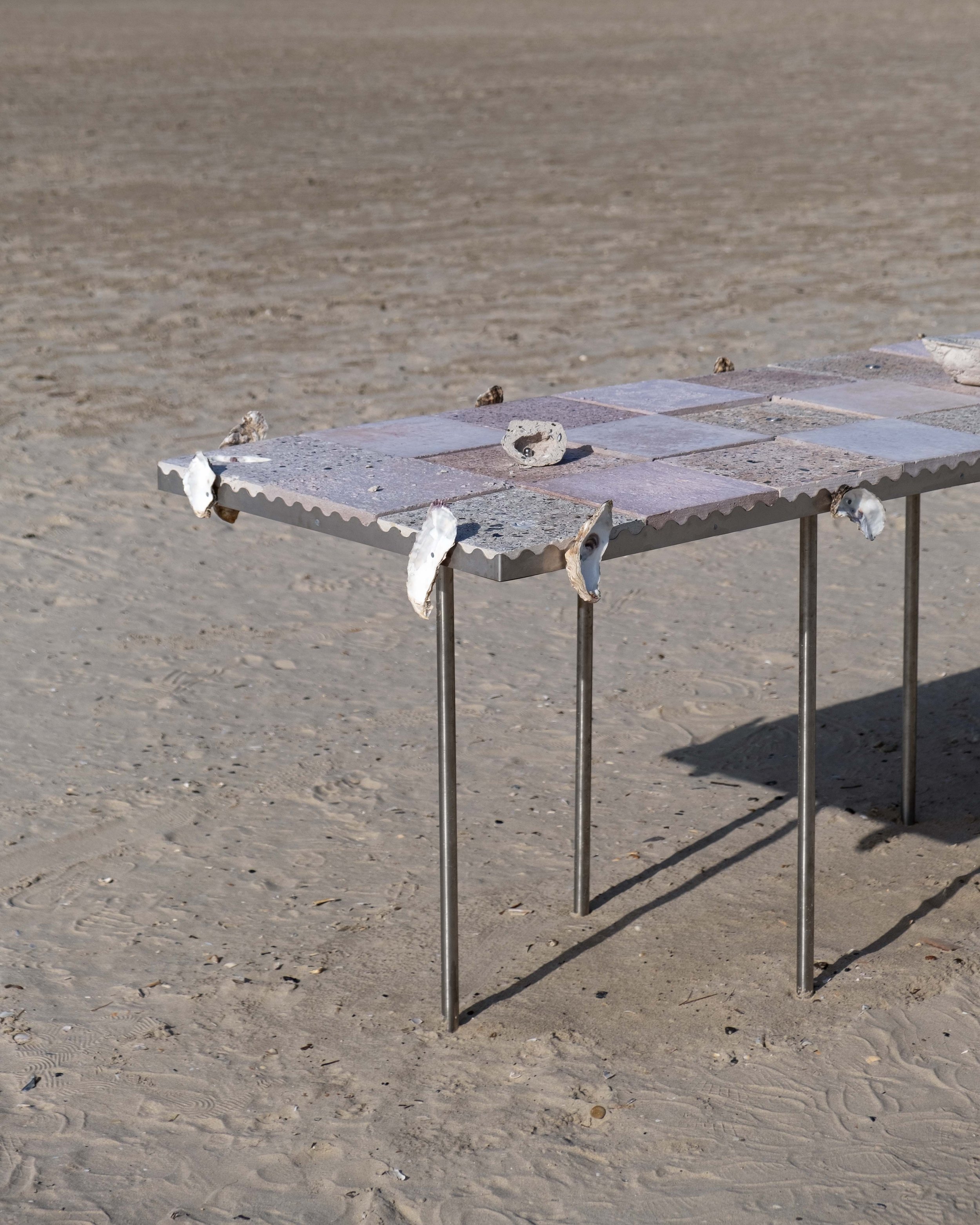
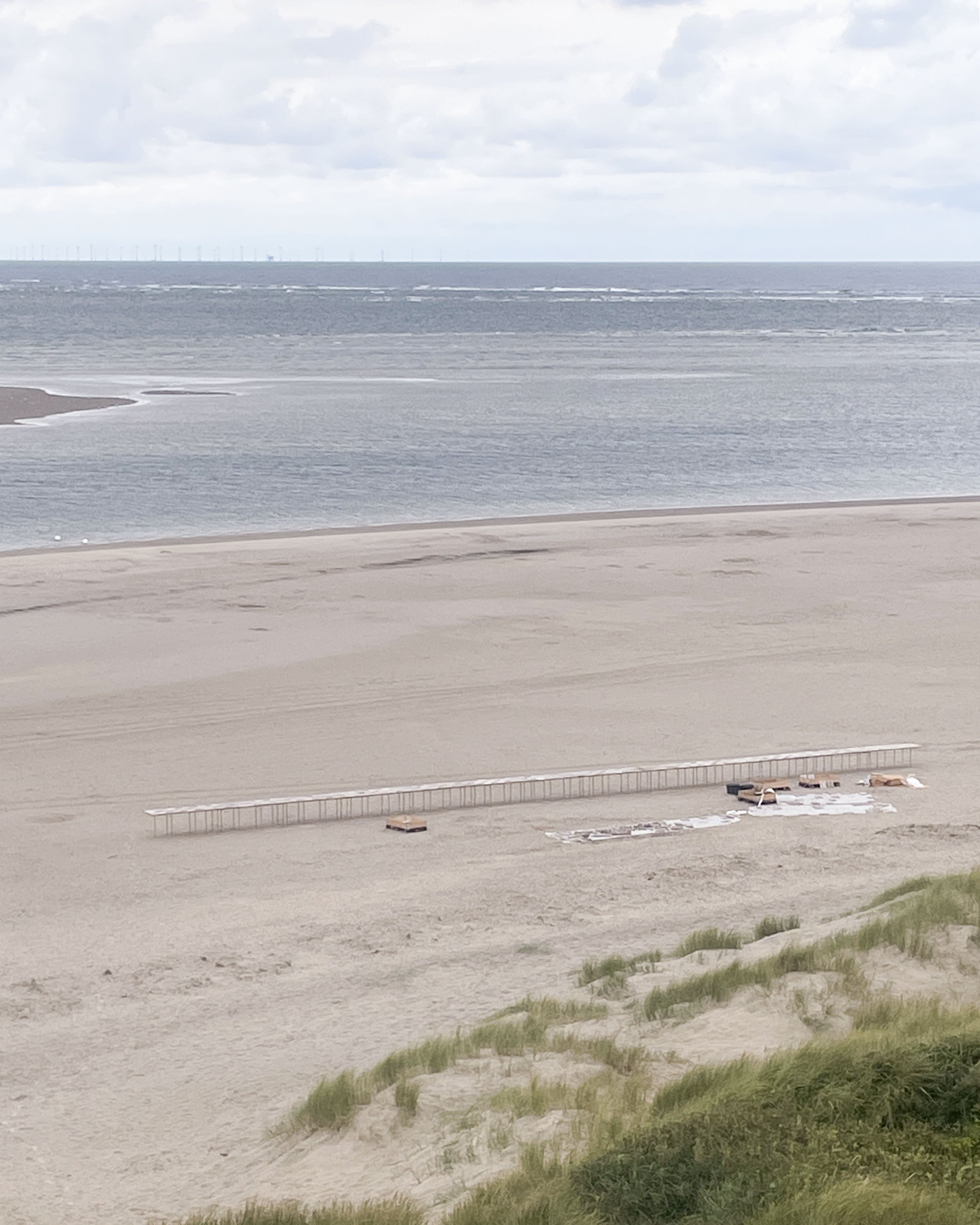
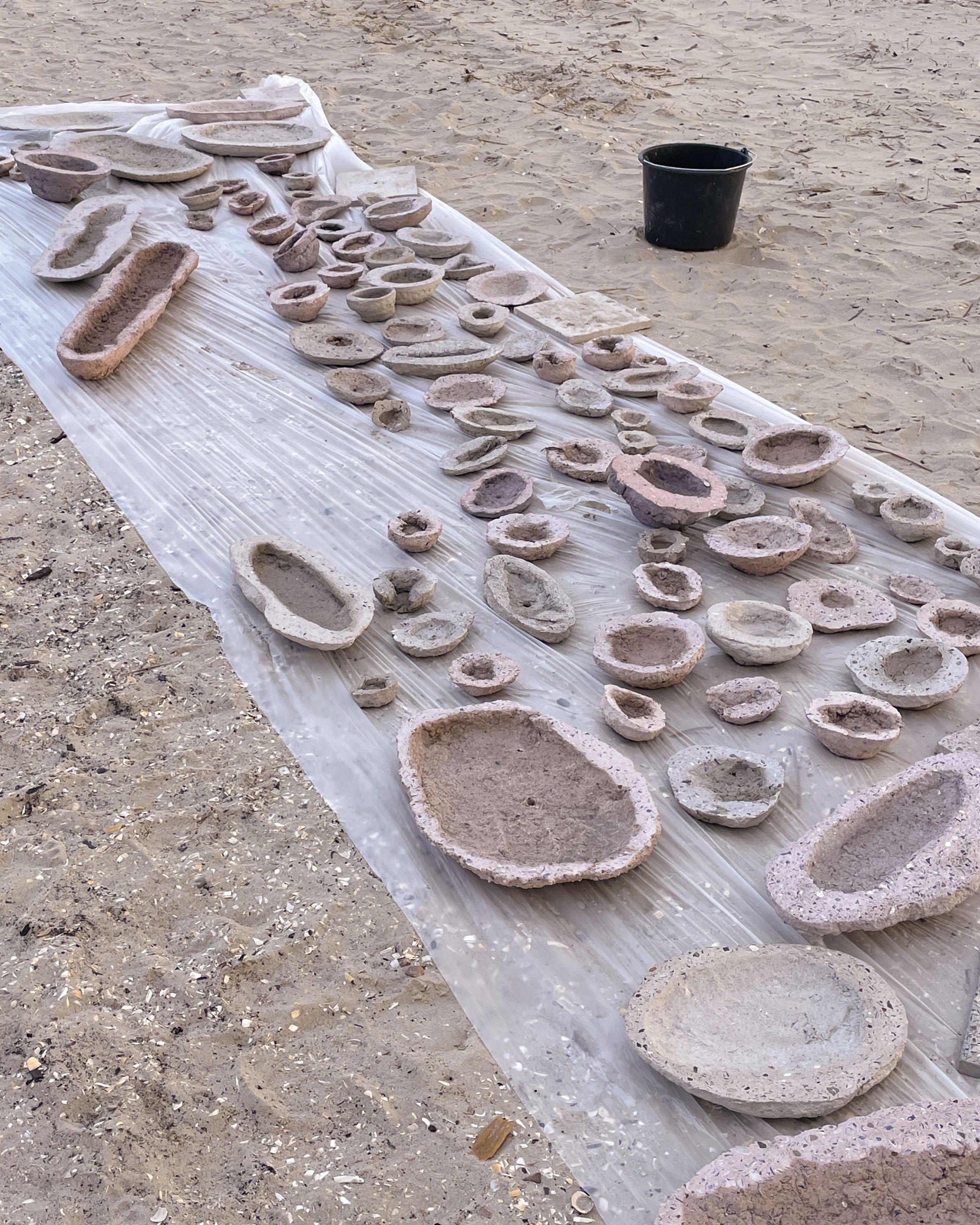
#4 We met at the LINA Conference in Copenhagen this October, where you presented your publication "her, här, her". Can you tell us more about it and how the project came about?
'her här her' is an interdisciplinary Scandinavian publication that we developed, in close collaboration with our editor, Magdalena Rozenberg (SE). The book is published by the Norwegian publishing house Another Space and features contributions from various Scandinavian architects, researchers, and writers. The starting point of the project was our installation “Kaffehytten” that was created in Jylland, Denmark in 2021. In the book, different contributors engage in a free-ranging discussion about themes such as materiality, language, place, and ecology in dialogue with our work. The book seamlessly crosses genres, transitioning from diary-like formats to essayistic texts and academic contributions. In many ways, “her här her” can be seen as the third and final chapter of our project in Jylland. We initiated the project with site specific material research, this research led to the 1:1 installation “Kaffehytten”, which in turn made the book possible.
Book Launch © Spacegirls
The aim with “her här her” was to provide insight into our creative process while also fostering a broader cross-disciplinary discussion about the role of architecture today. In many ways you can say that the book represents an open-ended conclusion to our three-year project. Perhaps the most fascinating aspect of the project was how the individual texts came to form a captivating dialogue among themselves.
Kaffehytten © Hampus Berndtson
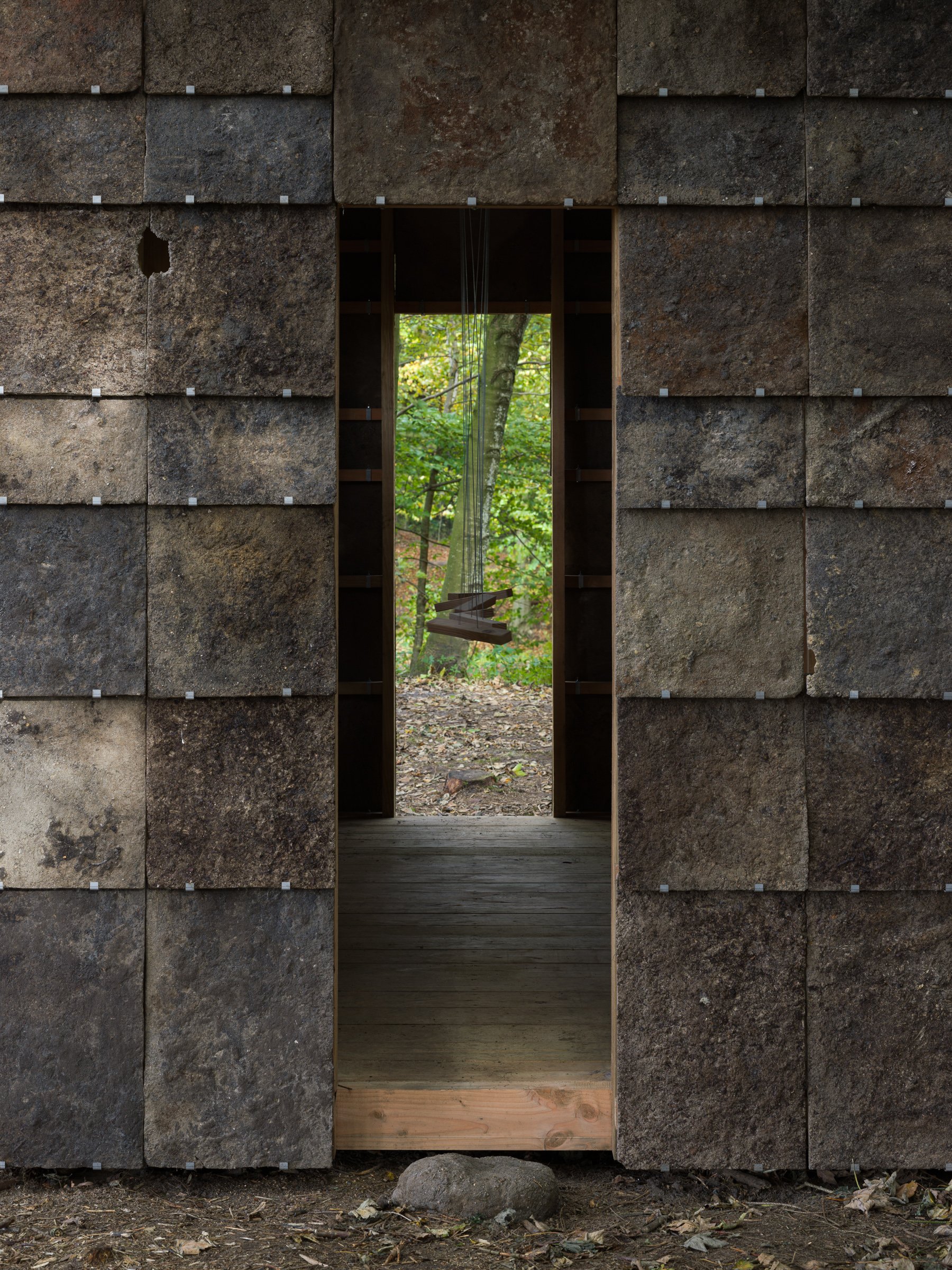
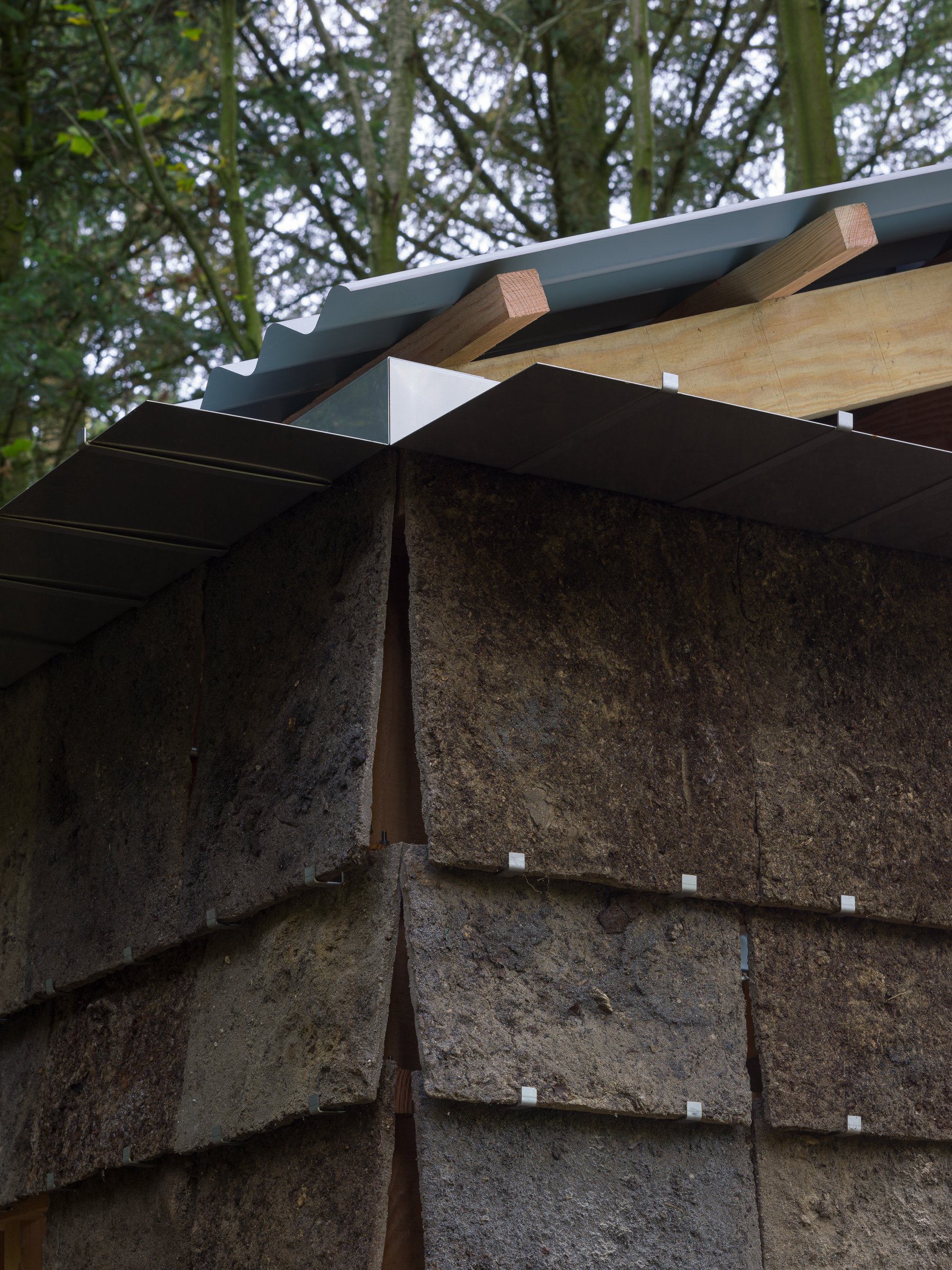
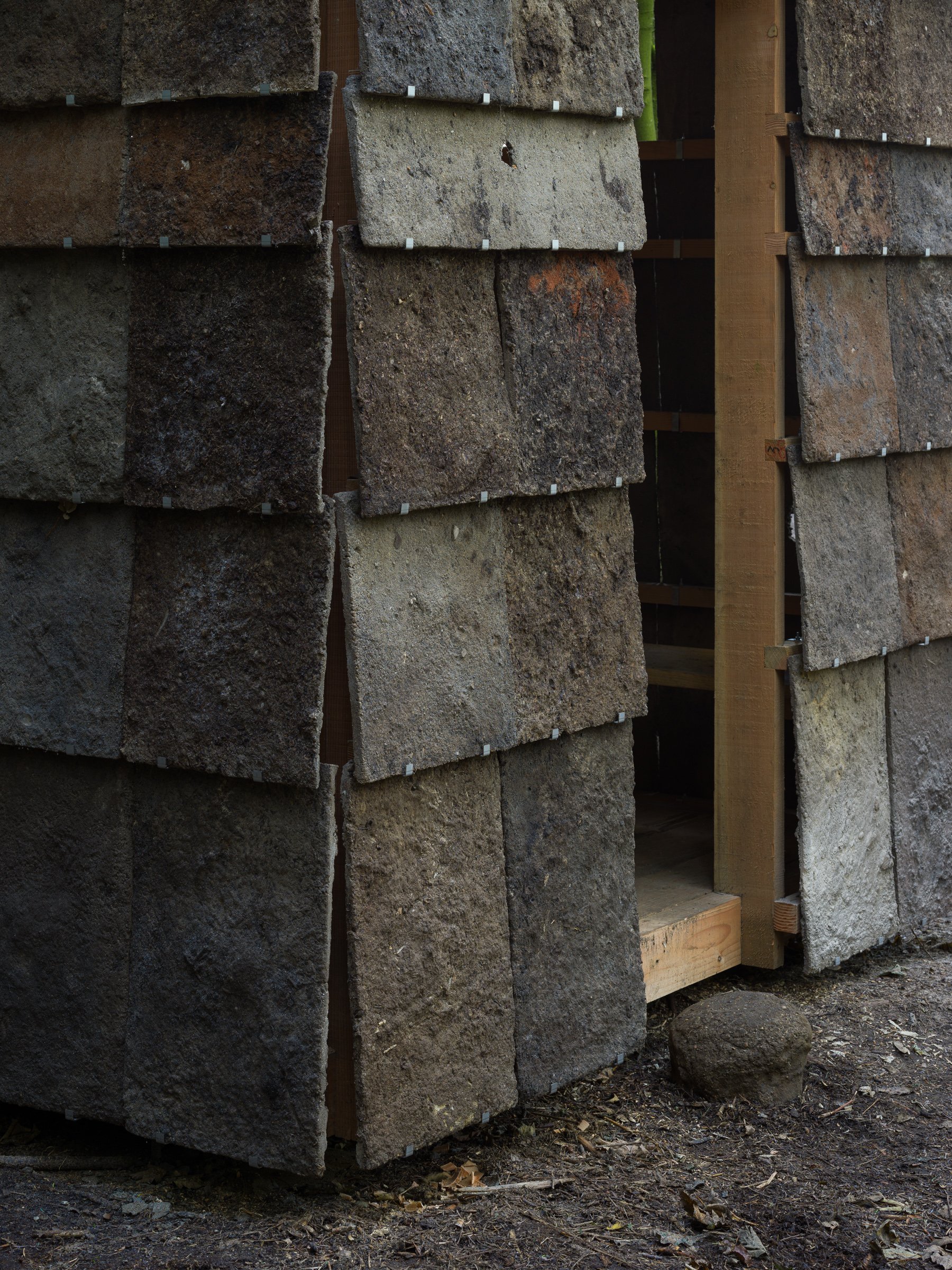
#5 In all your work you experiment with materials, their composition and haptics. Was this a conscious decision or did it happen over time? What fascinates you in the process?
Kaffehytten © Spacegirls
We've always been fascinated by the inherent qualities materials possess. It's intriguing to acquaint oneself with a new material, explore it, and establish a relationship with it. We're interested in both the concrete physical aspects and the cultural value of a material. While the physical attributes tend to remain relatively stable, cultural values, on the other hand, are more dynamic. For instance, we have experimented a lot with concrete in our practice - a material that to a large degree illustrates how our idea of a material changes, when cultural values change. Ten years ago, most architects didn’t think twice about using concrete in their projects, today the material is avoided, due to its large carbon emission.
#6 What are your next steps? Is there something you have always wanted to do?
We talk a lot about how we can become better at making money. Until now spacegirls has been kind of a non-profit organization. Many of our projects focus more on research and creating new knowledge rather than producing commercial products and buildings. We truly love being in this field, but it also brings some financial challenges that we still are trying to figure out. Our main professional goal at the moment is to work out how we can continue with our practice, in an economically sustainable way, without commercializing and compromising on our hardcore softness and other important values.
#7 How do you see the role of an architect in today's society?
Kaffehytten Sketch © Spacegirls
From our point of view, the architect should be someone working between disciplines. Someone with focus on creating communities and new knowledge - and less focus on capitalizing on the built environment. The role of the architect is multifaceted, but through experience we can unfortunately conclude that the industry does not have a broad view on how the skills of an architect can be explored.
We believe that the role of the architect today is more than contributing to bigger, better, faster cities.
Architecture is a profession with an ability to discuss and connect to other related professions - such as literature, art, science - and question important topics like care, sustainability (social and material), community, our connection to our surroundings and so much more. We believe the future role of the architect exists in these interdisciplinary meetings.
#8 How does your environment influence your work?
In most of our projects we work collaboratively with colleagues from other professions. To work cross-disciplinary with professions beyond architecture has had a huge impact on our practice. It has shaped how we look at architecture, and sharpened our focus on the immense capability of this profession. In a cross-disciplinary manner we are using architecture to facilitate new ways of thinking through discussion, theory and hands-on experimentation.
#9 Three things that inspire you at the moment:
Taffel For Perlemor © Frida Gregersen
JULIA FOX
PEARLS
ORNAMENTS
#10 What do you currently read, watch, listen to?
read: At the moment we love reading the website Women Writing Architecture . A site with a very engaged team of women curating informative and inspirational content. The Canadian poet Lisa Robertson is also someone we enjoy returning to, and bell hooks - all about love is of course a classic.
watch: The latest views of our obsession counts; “All the beauty and the bloodshed” by Laura Poitras (US), “Apolonia, Apolonia” by documentarist Lea Glob (DK), and ofc also the “greatest movie of all time” “Jeanne Dielman” by Chantal Akerman (BE) and last but not least the always lovely and entertaining “The Kardashians”.
listen to: The podcast “Every Outfit” has been a refreshing weekend ritual for some time now - a podcast where fashion and pop culture collide, from the twisted minds of Chelsea Fairless and Lauren Garroni (US). We would also really recommend the Norwegian pop phenomenon Swank Mami! Enjoy <3
Photo Credits: © Spacegirls, © Frida Gregersen, © Hampus Berndtson, © David Hugo Cabo, Interview Caroline Steffen





